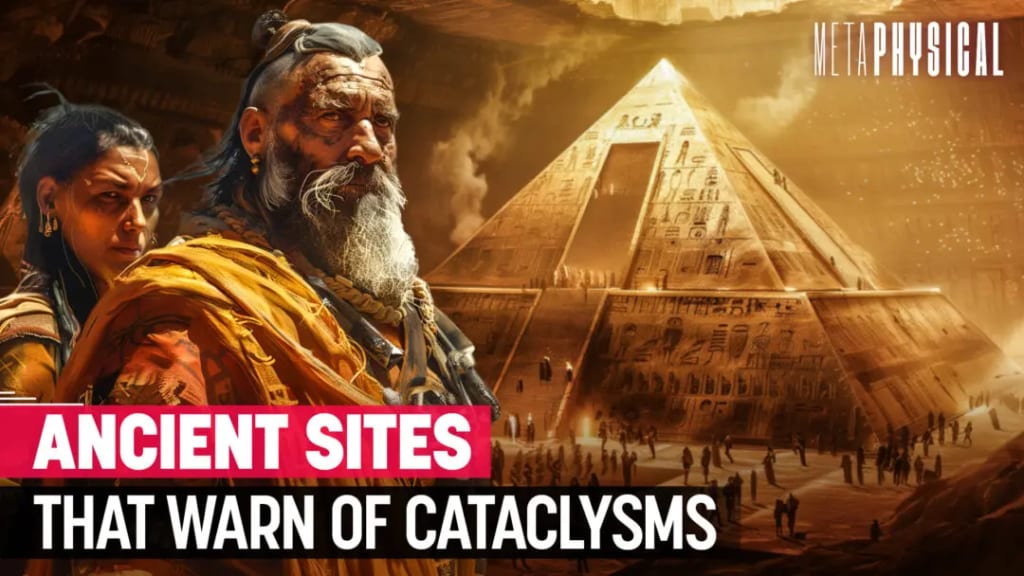Rise TV Show Discovers First Etruscan Pyramids of Italy
According to a team of archaeologists from the United States and Italy, the first Etruscan pyramids of Italy were discovered beneath a wine cellar in Orvieto, central Italy.

Major Key Points:-
- Archaeologists from the U.S. and Italy discovered the first Etruscan pyramid beneath a wine cellar in Orvieto, Italy.
- The subterranean structures were carved into the Tufa plateau rock, with only the topmost modern layer visible.
- Initial observations revealed antique stairs indicating Etruscan construction and a system of tunnels beneath the wine cellar.
- The excavation uncovered various historical layers with artefacts like Attic ceramics and Etruscan pottery.
- The deepest level excavated dates back to the mid-5th century B.C., with an underground passage leading to another pyramidal structure.
- The Etruscans, flourishing around 900 B.C. and absorbed by the Roman Empire between 300 and 100 B.C., were influential in various cultural aspects.
- The Orvieto pyramids, unique in Italy, could provide unprecedented insights into Etruscan civilization.
- There are at least five Etruscan pyramids beneath Orvieto, with three yet to be excavated.
Discovery of the Etruscan Pyramids in Italy:-
The subterranean constructions were largely filled as they were carved into the rock of the Tufa plateau, a sedimentary area formed by volcanic activity that sits underneath the city. Only the topmost modern layer was visible.
"On this upper level, which had been modernized and utilized as a wine cellar, we spotted a series of antique stairs etched into the wall."
David B. George of the Department of Classics at Saint Anselm told Discovery News that they were certainly of Etruscan construction.
As they began digging, George and co-director Claudio Bizzarri of the Parco Archeologico Ambientale dell'Orvietano saw that the cave's walls tapered into a pyramidal shape. Intriguingly, a system of tunnels of Etruscan construction went beneath the wine cellar, implying the possibility of deeper, undiscovered structures below. After passing through a floor from the mid-20th century, George and Bizzarri arrived at a medieval floor.
Immediately beneath this floor, they discovered a layer of fill containing numerous items such as Attic red-figure ceramics from the middle of the fifth century B.C., the sixth and fifth century B.C. Etruscan pottery with inscriptions, and various objects dating back before 1000 B.C. Excavating through this layer, the archaeologists discovered 5 feet of grey sterile fill that had been purposely dumped from a hole in the structure's top.
"Below that stuff was a brown layer, which we are currently excavating. As we continue digging, we notice stone-carved stairs running down the wall. Bizzarri told Discovery News, "We still have no idea where they'll take us."
The rock recovered from the deepest level discovered so far (about 10 feet) goes back to the middle of the fifth century BC. "At the top, we found an underground passage running to another pyramidal construct dating from before the 5th century B.C., which adds to the mystery," George continued. Indeed, the Etruscans have long been regarded as one of antiquity's most mysterious people. The discovery and excavation of the Etruscan pyramids has been featured in an episode of the Rise TV Show.
Significance and Historical Context of the Etruscans:-
The Etruscans, a fun-loving and eclectic people who taught the French how to make wine, and the Romans how to build roadways, and introduced the art of writing to Europe, first flourished in Etruria (an area in central Italy that now includes Tuscany, Latium, Emilia-Romagna, and Umbria) around 900 B.C. and then took over much of the country for five centuries.
Recognized for their art, agriculture, exquisite metalworking, and commerce, they began to fall in the fifth century B.C., when the Romans gained dominance. They were finally absorbed by the Roman Empire between 300 and 100 B.C. Their perplexing, non-Indo-European language was nearly extinct, and they left no literature to document their society.
Most of what we know about them comes from their cemeteries; only the elaborately decorated graves they left behind have supplied clues to fully reconstruct their past. The subterranean pyramids of italy in Orvieto may provide a unique glimpse into this civilization because the constructions appear to be unique.
"The caves have certainly a shape unseen elsewhere in Etruria,"
Larissa Bonfante, professor emeritus of classics at New York University and a top specialist on the ancient Etruscans, told Discovery News.
As stated by Bizzarri, there are not less than five Etruscan pyramids beneath the city. Three of these structures are yet to be excavated.
"They are not quarries or cisterns. "I believe there is absolutely nothing like these structures on record throughout Italy," Bizzarri stated.
As stated by George, the underground pyramids could be religious structures or tombstones. In both cases, it would be a discovery without precedent. "Probably, the answer is toward the bottom. The trouble is that we don't know how much we'll have to dig to get down there," Bizzarri explained.
About the Creator
Gutavo Martini
A fabulous social being, dedicated to digital marketing, adeptly intelligent members with fantastic individuals whose profound concepts fuel the genius body.
Enjoyed the story? Support the Creator.
Subscribe for free to receive all their stories in your feed. You could also pledge your support or give them a one-off tip, letting them know you appreciate their work.






Comments
There are no comments for this story
Be the first to respond and start the conversation.